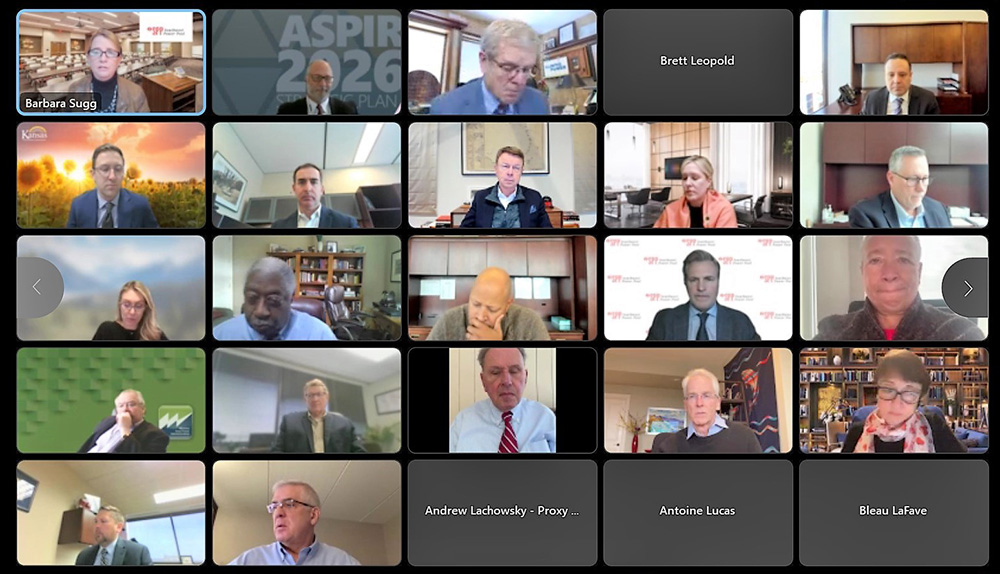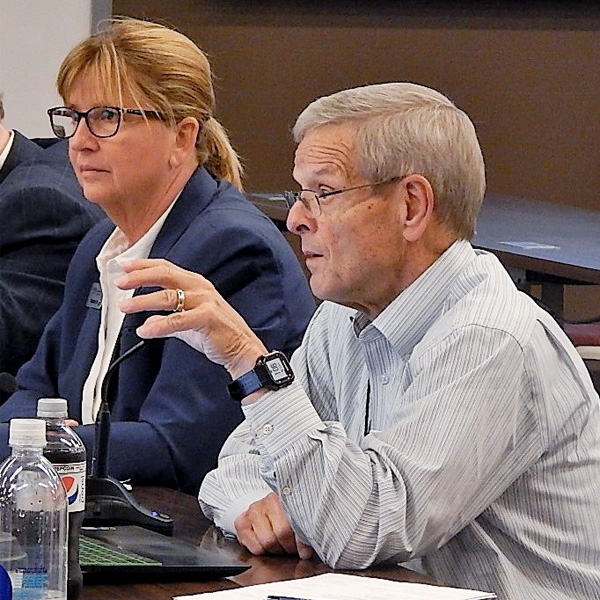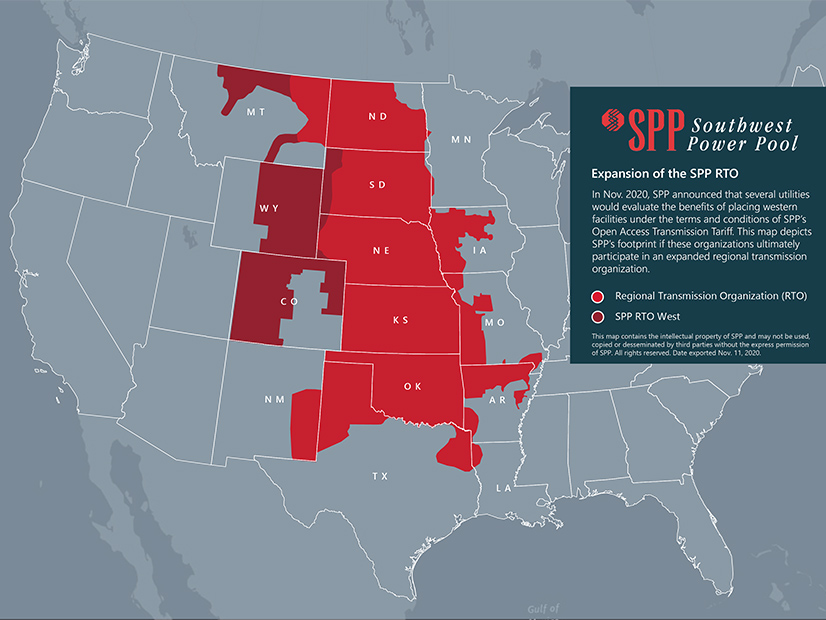Directors, Members Approve Resource Adequacy Revisions
SPP’s Board of Directors and Members Committee last week approved two revision requests related to resource adequacy requirements, ending a last-minute dash to gain stakeholder approval.
The tariff changes, RR536 and RR537, would provide load-responsible entities with a short-term, nonpunitive alternative approach to deficiency payments for the summer resource adequacy requirement (RAR). They breezed through a gauntlet of stakeholder groups the week before and were then approved by the Regional State Committee on Jan. 30. (See SPP MOPC Approves Late Resource Adequacy Revisions.)
Staff have been working on the mitigation strategy since July, when SPP increased the planning reserve margin (PRM) from 12% to 15%, effective this year. That left some members complaining they would not have enough time to meet the requirements. (See SPP Board of Directors Briefs: Dec. 6, 2022.)
“There is no doubt that we’ve had some fairly lively discussions on some probably critically important issues over the last three quarters,” board Chair Larry Altenbaumer said during the Jan. 31 meeting. “I believe that despite some of the concerns that had been raised, we did end up with a balanced and a constructive outcome. I think it does legitimately help us fulfill our overall planning reserve requirement for SPP’s footprint, and because it is limited to a two-year window, it is responsive to the original desires that were laid out by our stakeholders … to their planning.”
Stakeholders modified RR536 to clarify that LREs can make a sufficiency payment only when the PRM is increased within the previous two years and the entity demonstrates it had adequate capacity to meet the PRM before it was changed. A deficiency cannot result from selling accredited capacity to another region after the PRM’s increase is approved.
Under the change, capacity could only be claimed for accreditation by one asset owner in the SPP footprint. Capacity used to resolve deficiencies could not be sold to another region for the applicable RAR season.
The measure includes the Market Monitoring Unit’s sufficiency valuation curve for the market’s capacity. The curve would start at twice the cost of new entry (CONE) at or below the sum of noncoincident peak loads, then slope downward to a net CONE value when regional accreditation reaches the PRM. When the region has sufficient accredited capacity, the net CONE would drop down to zero at 115% of the PRM.
RR537 emerged from the stakeholder process with revised language that removes a tariff violation when LREs fail to make a resource adequacy payment. As modified, LREs would be deemed sufficient for the adequacy requirement with a deficiency payment.
The change was also modified to clarify that only capacity resolving deficiency is obligated to stay in SPP; the obligation would only apply to a specific RAR season; and that a deficiency payment is based on a kilowatt-year.
Staff hope to gain FERC’s approval in time to accredit resources for the summer season (June 1-Aug. 31).
The Advanced Power Alliance’s Steve Gaw abstained from the Members Committee vote on the two measures, warning of unintended consequence from a permanent tariff change. American Electric Power’s Antonio Smyth also abstained but did not explain his decision.
“We accommodated the fact that the [PRM] increase was pretty steep in a fairly short time frame,” said Gaw, who supported the RRs’ approach to the increase. “However, I am very concerned about this going into the tariff as a permanent fix. This is a significant lessening of the consequences of not increasing individual LREs’ accredited capacity under the resource-adequacy obligation when the PRM increases. The tariff language change allows this to kick in on any increase to the PRM in the future without really having a longer look and understanding of all the consequences.”
“The increase was fairly quick. … Steve makes a good point that you’re setting yourself up potentially for some unintended consequences,” Basin Electric Power Cooperative’s Tom Christensen said. “There are some safeguards so that it appears it won’t be abused. If there are some unintended consequences that come about, I think we’ll just need to make sure that we deal with those as they come.”
COO Lanny Nickell agreed. “The language that we have arguably allows this to be used time and time again. My sense is that there is appropriate focus and discipline … to make sure that nothing happens that will abuse what’s provided here,” he said.
The RSC’s members had brought up a similar issue during its discussion the day before. The committee’s president, Kansas Corporation Commissioner Andrew French, resisted an attempt to table RR536 over concerns FERC could reject a previously approved tariff change (RR515) that would allow LREs to qualify for and receive exemptions from deficiency payments.
SPP General Counsel Paul Suskie assured the regulatory group that all three revision requests are designed to stand on their own.
French said 536 and 537 are “acceptable responses to the current situation” but “perhaps another planning reserve margin increase” is necessary if a more “holistic” design is not put in place.
“I would only support [the RRs] as an interim approach. They are not a good long-term resource adequacy construct to support long-term resource planning,” he said.
French joined with the other members in rejecting the motion to table and then in approving RR536. The measure passed 8-3, with Nebraska, North Dakota and South Dakota regulators in opposition.
The RSC passed RR537 9-2, with North Dakota Public Service Commissioner Randy Christmann and South Dakota Public Utilities Commissioner Kristie Fiegen dissenting.
“I get the point of it. [LREs] are making a deficiency payment, but you’re either compliant, or you’re not compliant. You’re either deficient, or you’re not deficient,” Christmann said. “Paying the penalty doesn’t change that. It’s just the penalty that’s associated with being deficient.”
Board Grants CRSP More Time
The directors and members both approved new terms and conditions for RTO West membership that make allowances for Western Area Power Administration’s Colorado River Storage Project (CRSP) to potentially join the market, granting a four-month extension for the acceptance period.
The federal power marketing administration now has until July 1 to accept the new membership terms and conditions. The extension is contingent on CRSP publishing its intent to purse SPP RTO membership in the Federal Register by Feb. 28.
The new terms include crediting CRSP’s point-to-point (PTP) transmission service and a federal service exemption (FSE) of replacement energy to satisfy its statutory load obligations. The Strategic Planning Committee endorsed the recommendation during its January meeting. (See “CRSP Faces Tx Rate Issues,” SPP MOPC Approves Late Resource Adequacy Revisions.)
CRSP was built to move federal hydropower, but low water levels are increasingly risking the utility’s ability to meet its service obligations. In addition, about 88% of CRSP’s transmission obligations sink outside its zone, leaving the remaining 12% exposed to rate increases because of SPP’s treatment of PTP revenues.
Working with eight other Western parties interested in RTO West membership, staff were able to modify the conditions to allow CRSP’s PTP revenue from using its facilities to meet contractual or statutory obligations be distributed back to the agency.
Because SPP’s tariff won’t allow replacement power that CRSP may need to meet its obligations be classified as an FSE, the parties agreed that replacement energy delivered from the utility’s zone be eligible for the exemption. Replacement energy delivered to CRSP’s zone would be subject to tariff provisions and charges.
Director John Cupparo, who led a $6 billion transmission investment program in the West while with Berkshire Hathaway Energy and also served as PacifiCorp’s CIO, said adding Western members and strengthening the seam between the two interconnections is “going to pay huge benefits.”
“I think it’s clear that something’s going to happen in the West for the first time in decades,” he said. “Market development is going to occur in some form, and as those lines get drawn, they don’t typically get redrawn.
“So, I’ve encouraged the [SPC] and this group to keep an open mind and be supportive as we look to advance these initiatives,” Cupparo added.
Sugg Lays out 2023 Goals
CEO Barbara Sugg said resource adequacy and resilience will continue to top SPP’s list of corporate goals for the year, saying that while the RTO will dedicate “significant attention” to completing its strategic plan, “none of it matters if we don’t get resource adequacy right.”
She said clearing the generation interconnection queue is also one of SPP’s top goals. Staff are on track to clear the 2018 and 2019 clusters this year and to work through the 2020 and 2021 clusters next year, Sugg said.
 SPP CEO Barbara Sugg kicks off the Board of Directors/Members Committee’s virtual January meeting. | SPP
SPP CEO Barbara Sugg kicks off the Board of Directors/Members Committee’s virtual January meeting. | SPP
Other priorities for 2023 include process improvements to the queue and the consolidated planning process; maturing the enterprise risk management program; and making “significant and measurable progress” on the strategic plan’s goals.
“We know that standing still is not a good option for SPP, and it’s only through our collaborative stakeholder process that we will achieve what we’ve set forth in that strategic plan,” Sugg said.
Altenbaumer, Martin to Leave Board
 Joshua W. Martin III | SPP
Joshua W. Martin III | SPP
The meeting marked Altenbaumer’s last as the board’s chair. He and Joshua W. Martin III are both leaving the board at the end of the year, taking a combined 38 years of service with them. Martin has served as a director since 2003 and Altenbaumer since 2005.
Vice Chair Susan Certoma, now the board’s most senior member with three years of experience, will succeed Altenbaumer as chair. Liz Moore will become vice chair.
“I want everyone to know that it has been and continues to be a cherished honor to serve on this board,” said Altenbaumer, who took over the chairmanship in 2018. “At the time that I became board chair, I felt that it was appropriate to only do so for about five years. I believe there is value in rotation for an organizational leadership, and I think that this is a good time to make that change.”
“You have brought a lot of collaboration. You listen and you have listened as chair to our variety of different interests. Your patience is incredible,” Gaw told Altenbaumer. “This organization is far better today for your service, especially from how you are able to listen to the concerns of all of those stakeholders and still find a way to bridge the gaps and move things forward.”
 CEO Barbara Sugg and Board Chair Larry Altenbaumer | © RTO Insider LLC
CEO Barbara Sugg and Board Chair Larry Altenbaumer | © RTO Insider LLC
The Corporate Governance Committee will begin the process of filling the vacancies during the second quarter before, as Sugg said, “Larry and Josh ride off into the sunset listening to Jimmy Buffett.”
The committee will use the search firm that is already under contract from last year. Sugg said the committee has the “full expectation” of bringing recommendations to annual members meeting in October. (See “Membership Elects 2 New Directors,” SPP Board/Members Committee Briefs: Oct. 25, 2022.)
Moore has announced her intention to serve another three-year term when her current term expires at the end of the year. “I have no doubt that we will be very happy to renominate her,” Sugg said.
The CGC also has two vacancies to fill on the Members Committee and another on the Human Resources Committee, following Sunflower Electric Power CEO Stuart Lowry’s retirement last year. The committee plans to bring nominations for the vacancies to the board’s April meeting.
Consent Agenda Flies
The board consented to approval of the SPP Transmission Expansion Plan (STEP); a sponsored upgrade study of NextEra Energy’s proposal to add a 345/138-kV transformer at Oklahoma Gas & Electric’s Cimarron substation; and two revision requests, all previously approved by the Markets and Operations Policy Committee:
- RR505: streamlines the approval of remedial action schemes with more defined criteria and clarifies RASes’ appropriate uses.
- RR519: formalizes the SPP operating criteria’s requirement to perform an annual resource real-time availability evaluation and report findings and recommendations to the appropriate stakeholder group.
It also consented to withdrawing notifications to construct for a Sunflower 115-kV capacitor bank and a 69-kV Western Farmers Electric project; removing the suspension of Basin Electric’s Kummer Ridge-Roundup project in North Dakota, comprising a new 33-mile, 345-kV line and substation upgrade; and modifying the NTC’s approval date for NextEra Energy Transmission Southwest’s 345-kV Wolf Creek-Blackberry project in Missouri and Kansas, from Jan. 1 to May 17.



